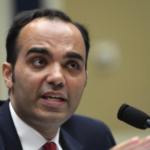Researchers from the American Cancer Society have established a link between the amount of medical debt an individual carries with a higher mortality rate for individuals with cancer, according to research that was published last week.
For every 1% increase in the population of individuals carrying medical debt, there is a 1.12 increase in death rates (per 100,000 person-years) from cancer. The data, which was presented last week at the annual meeting for the American Society of Clinical Oncology, is considered to be statistically significant. The researchers concluded that increasing access to affordable healthcare may improve cancer outcomes.
Looking at data on a county-by-county basis, the researchers noted that the percentage of individuals carrying some amount of medical debt ranged from 0% to 53%, and was higher in counties that had larger percentages of non-Hispanic African-Americans, adults without a high school education, those living below the poverty level, those who were uninsured and those who were unemployed. A one percentage point increase in the population with medical debt was associated with an increase in the mortality rate for all malignant forms of cancer, with the highest increases for individuals with lung cancer, colorectal cancer, and female breast cancer.
Researched suggested that individuals with medical debt have a higher mortality rate from cancer because many choose to forgo or delay treatment in order not to incur more debt.
“I think that’s a lot of times what people are concerned about,” said Dr. William Dahut, chief scientific officer for the American Cancer Society, in a published report. “They have a cancer diagnosis, and they don’t want to leave their family destitute because of their cancer diagnosis.”









